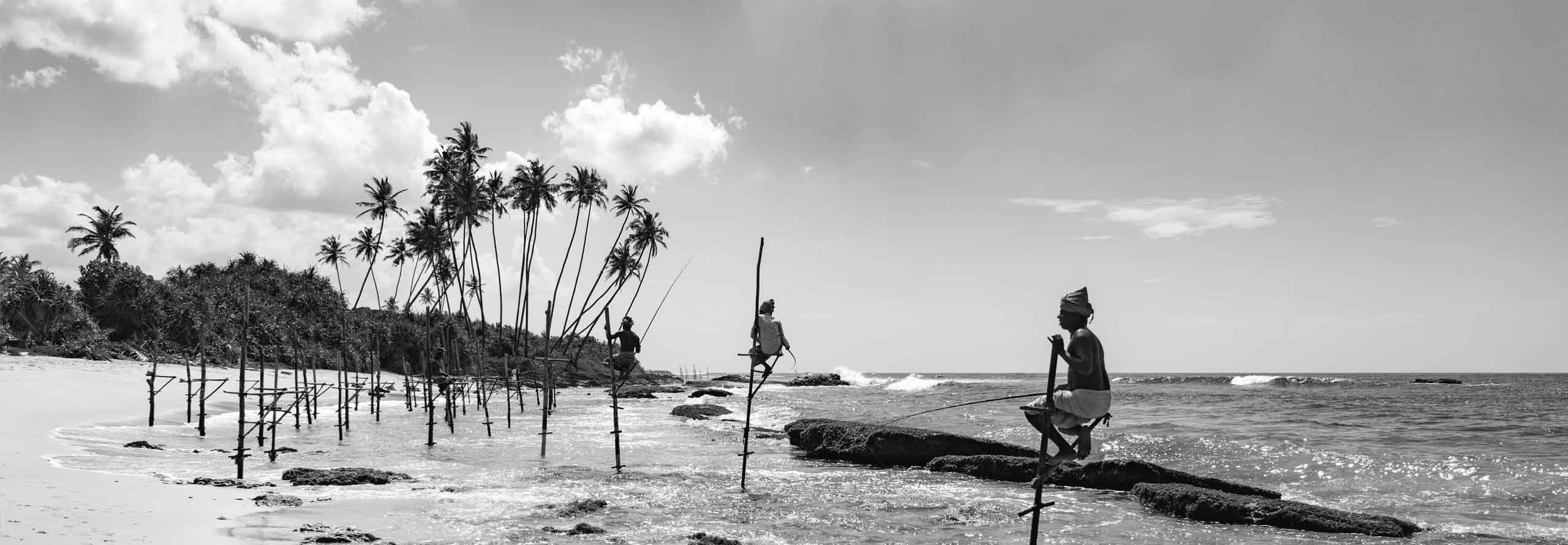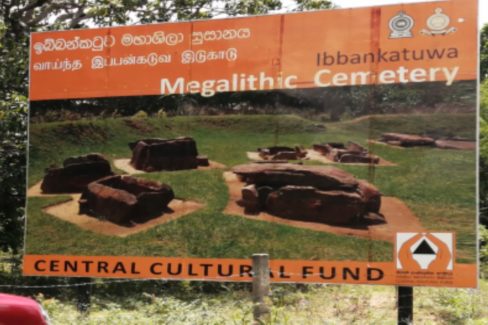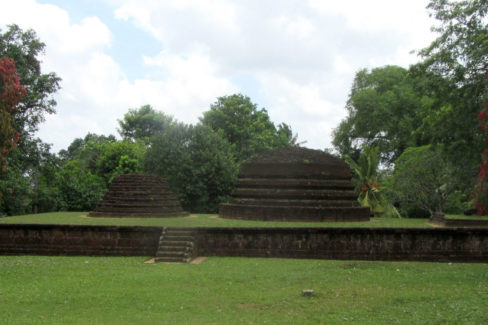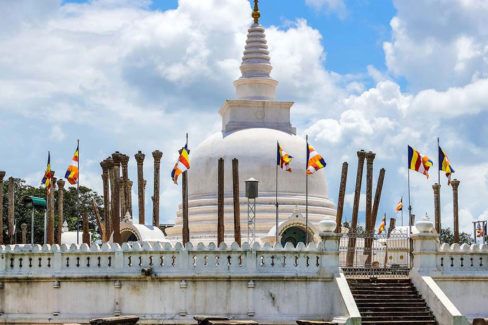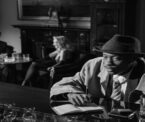Socio Cultural Changes that occurred during the 19th century in the coastal regions of Sri Lanka: A discussion in relation to religious trends.
Introduction
The 19th century marks the triumph of British colonialism throughout Sri Lanka especially in the coastal regions or maritime provinces as they are known. The British arrived in Sri Lanka, then Ceylon, in the wake of the Portuguese and Dutch conquests. In this regard, the influence of the colonisers is immense and the British continued, fortified and established themselves as the supreme rulers of this nation. Though their primary objective was economic, the socio cultural repercussions are immense and far reaching.
In this context, the role of religion and prevalent religious trends are important especially since religion was closely linked with education. In this regard, one cannot discuss religion solely but education is interlinked and as important.
In an archaeological context, it can be understood as a form of cultural anthropology where the study of past societies and cultures give an understanding of the present situation.
Early 19th Century and the British
“The Portuguese did not persecute anyone in Ceylon, though they made every effort to convert rulers and people to Roman Catholicism even by offering worldly advantages. On the other hand the Dutch at first tried hard to prevent Buddhists, Hindus, Muslims and Roman Catholics from carrying on religious worship in public places and withheld from them the civil rights granted to the Protestants. But influenced by the change of view in Europe, they began to relax their regulations in the latter part of the 18th century. The British had granted religious toleration to Roman Catholics in Great Britain, and the early British rulers did not enforce the Dutch laws against them. Maitland not only repealed these laws in 1809 but also went further and granted the Roman Catholics the privileges enjoyed by the Protestants in order to win their support for British rule” (Mendis, Colombo, 1952).
In the early part of the 19th century, the British were not too keen on spreading their religion – Christianity or getting involved in education. The East India Company discouraged missionary activities as they felt it would cause political turmoil (De Silva, 1973). As such they relaxed their stance on religious tolerance and repealed repressive Dutch laws against Roman Catholics in order to win their favour.
However, there were many missionaries that arrived on the island – British mission groups, American, Wesleyan and these established schools. They were not ventures supported by the British East India Company but Governor North decided to educate the people. In England, education was carried out by the Church and so in Sri Lanka North revived these schools and employed European clergymen and Ceylonese catechists.
Along with this came the Evangelical Movement in England which criticized the government for not spreading Christianity in the colonies. It is under this pressure that North revived the schools in 1810 (Mendis, Colombo, 1952).
The Christian missions which came out of the Evangelical Movement, established schools and continued education in Ceylon. Christian College in Kotte and Jaffna College in Vadukkoddai are two such examples.
Education and Religion Gather Force
“Thus almost from the very commencement of British missionary activity in Ceylon, education was used as a means of conversion to Christianity, and of producing an educated Christian population.” (De Silva, 1973).
According to Colebrooke, the content of education should be Western, Christian and English and the schools should be left in the hands of Christian clergymen (Peebles, Lake House, 1995).
The missionaries grew in strength and they had to get over the obstacle of learning the indigenous languages. In the 1820s there was a compilation of a Sinhala grammar by Rev. James Chater and continued by a Methodist missionary Rev. Benjamin Clough. In 1821 Clough published an English Sinhalese dictionary and nine years later a Sinhala English dictionary and a Pali grammar. The translation of the Bible into Sinhala was accompanied by documents on how to teach it.
Where the government lacked an organized system to administer schools, the missionaries were able to do so with a rudimentary organizational structure.
Colebrooke’s recommendations on education was clear on the purpose of education which was to create a group of people who could serve in government. It was an aid to “natives to cultivate European attainments”.
The missionary schools were far superior to the government ones so Colebrooke recommended that they be placed under a School Commission comprising of the Archdeacon of Colombo, clergy of the island and other government agents and civil & judicial officials. The School Commission established the fact that all education came under the government. Still the missionary schools were strong (De Silva, 1973).
The conviction that elite schools should be taught exclusively in English – students were punished for using Sinhala or Tamil – was the general opinion of all educationers whether Christian or Buddhist, Foreign or Ceylonese (Peebles, Lake House, 1995). Kandy Collegiate School became Trinity College and the Anglican St. Thomas College rivalled Royal College as the most prestigious school.
This education system created a Westernised educated elite, which were not Christianised to the extent that the missionaries expected.
Impact on Buddhism and Hinduism
“On the whole Buddhism and Hinduism suffered under the British conquest. In the Maritime provinces they had lost the prestige which had attached to them as the religions of the rulers, and had entered into an unequal competition with Christianity” (Mendis, Colombo, 1952).
Buddhism and Hinduism suffered during the Portuguese times where they destroyed viharas and devalas during their wars and the Dutch did not allow public worship of these religions. Hence when the British took over, it did nothing to alleviate the status of Buddhism.
With the Christian missionary schools and the subtle policy of the British to appoint only Christians to government service, there emerged many converts who albeit on a nominal level practiced Christianity, they still were no great advocates of Buddhism.
There was also the notion that Christianity had moved along with the times and had become more modern and flexible to suit the society of that time. Whereas Buddhism and Hinduism remained other worldly in their outlook and was more suited to a feudal society.
“Christian theology and organization had advanced with progress made in Europe, and was more suited to meet the modern requirements than Buddhism and Hinduism…” (Mendis, Colombo, 1952).
During the period, 1851 – 1872, the Christian missions made great headway. The missions found the schools a good means for spreading Christianity and those who realized the value of education welcomed the Christian schools.
Buddhist Revival
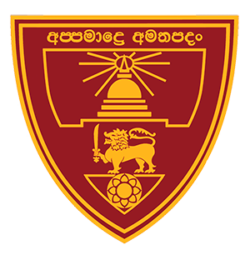
“The Christian policy of forming those who came under their influence into a separate community which took no part in Buddhist rites and ceremonies made the Sangha realise that their ancestral religion was in danger” (Mendis, Colombo, 1952).
These activities led to the revival of Buddhism which started in the Kandyan Kingdom with Valivita Saranankara (1698 – 1778) and then spread to the maritime provinces through his pupils. In 1839 the Paramadhammacetiya Pirivena was established at Ratmalana by Valane Siddhartha of Panadure and the scholars from this pirivena included Hikkaduwe Sri Sumangala, Ratmalane Dharmaloka and his pupil Sri Dharmarama and Pandit Batuvantudave Devarakshita (Mendis, Colombo, 1952).
This period saw many controversies in journals and newspapers such as the Lakmini Pahana (1862) and the Ramanya Nikaya was established in response to the impiety of the existing Buddhist monks and this Nikaya claimed to follow Pure Buddhism of the Pali canon.
The Buddhist monks began to follow the methods of the missionaries themselves to counteract their evangelistic work. Assisted by Buddhist laymen who had wealth, they began to establish printing presses, publish tracts and form societies for Buddhist propaganda.
“The Amarapura Nikaya which emerged from these endeavours was the only significant new development in Buddhism in the first half of the nineteenth century; it was open to all castes in defiance of the Kandyan practice which restricted ordination to those of the goyigama caste” (de Silva, 1973).
The Amarapura Nikaya made headway in the maritime provinces and it was distinguishable from Kandyan Buddhism in terms of its flexibility and receptivity to social change.
Later on in the 19th century, the Buddhist revival reached a culmination with the debates between Christian and Buddhist monks. Rev Migettuvatte Gunananda’s famous Panadura debate reached the ears of Col. H.S. Olcotte – Founder of the Theosophical Society. He sent Migettuvatte Gunanda pamphlets and tracts which were critical of Christianity and these were translated by him into Sinhala and distributed among the masses. Through these translations, the names of Olcott and his Russian associate Madam Blavatsky became familiar to Buddhists. They both arrived in Sri Lanka in 1880 and they set up the Buddhist Theosophical Society through which they championed the Buddhist revival. A Buddhist education fund was set up and there was agitation to have Vesak declared as a national holiday. Olcott was also instrumental in designing and adopting a Buddhist flag in 1885 (de Silva, Penguin, 2005).
Thus the Buddhist revival through education also came into full force. Buddhist Sunday schools were started; in 1886 one of them developed into an English day school which became Ananda College (Peebles, Lake House, 1995).
Hindu Revival
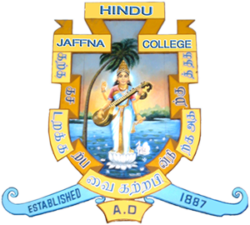
The work of the Christian missionaries also led to the revival of Hinduism in the North. Some Hindus who had been educated in Christian schools and who had a sufficient amount of wealth started in 1888 the Saiva Paripalana Sabhai which was the society for the propogation of Saivism. They were partly influenced by Arumuka Navalar who worked towards a Hindu and literary revival, and partly by the Hindu revival in India (Mendis, Colombo, 1952). In 1889, the society started the Hindu Organ – an English and Tamil fortnightly publication, when they realized the power of the press. The Sabhai realized the value of education and took over the Town High School which later became the Jaffna Hindu College.
Black Skin, White Masks – the Emergence of a Westernised Elite
When the British took over the maritime provinces of Ceylon, they relied heavily on the Mudaliyars or headman class, to administer the provinces as they did not assimilate with the indigenous people (Wickremeratne, 1973). Thus the Mudaliyars retained a lot of power and were considered the traditional elite.
However, the traditional elite were challenged by a rising new rich elite which was created through education. The English, missionary education along with the anglicized lifestyle of the new rich became an ideal of elite behaviour and it was easily and readily emulated. Thus was born a class of Ceylonese who were anglicized in mannerisms, language and behaviour but who retained some of the traditions and the physical attributes of the indigenous people.
“The English schools were the nurseries of the anglicization process” (de Silva, Penguin, 2005). The curricula of the public and grammar schools of nineteenth century England were the models for the Colombo Academy and the prestigious English schools run by the missionaries.
The numbers created were small enough to be accommodated into the existing professional framework – unemployment of university educated men was unheard of during this period. Medical College and Law College was established during this century to cater to the need of tertiary education.
Though an elite group ideally means an exclusive group with little ties to the masses, the elite that formed maintained these ties in order to exact their influence and were still buoyed by traditional values such as the caste prejudices. The English educated were in the forefront of the caste disputes that broke out among the Sinhalese in the latter part of the 19th century and the leadership for religious revival came from this same English educated group.
Religious revival led to inter-religious debates and the notion of early nationalism was built on this ideal of regaining Buddhism and Hinduism which were once lost to the colonisers.
Thus education became a means by which social mobility became possible and this caused a social upheaval, between the traditional elite and the new westernised elite. Initially, the elite school system created a barrier between the English educated few and the Sinhala and Tamil educated masses. There was no opportunity for English education to expand and this led to the frustrations of the masses, the results of which we see in the 20th century (Peebles, Lake House, 1995). The British also maintained this system as it suited them to have a small elite that could be recruited to government service.
This over emphasis on English and the elite position afforded to it is probably what first led to the notion that the language is that of the privileged and elite which is prevalent even in today’s society.
Conclusion
The 19th century saw a lot of activity and upheavals with regard to religion and education. The inter-linking of Christianity and education and the resultant Buddhist and Hindu revivals, caused a lot of socio cultural changes in the prevalent Ceylonese society.
What started off as missionary schools are to date present in Sri Lankan society – with the churches, buildings and the school systems they administer. The Westernised elite is what led to the forming of an anglicised in between society, similar to Franz Fanon’s Black Skin, White Mask notion – Sri Lankans who embody both western and Sri Lankan values. This group has undergone many transformations and even today we see the vestiges of that group.
Education which was the vehicle by which social mobility became possible is today a fundamental right throughout the island. Regardless of the impact of the Christian missionary education in terms of religious and social upheavals, the very establishment of learning institutions need to be credited to the missionaries.
“Had there been no Christian mission schools in the nineteenth century, there would have been little learning in this island” (Mendis, Colombo, 1952).
Thus the aforementioned actions of the 19th century had a great impact on the subsequent activities and emergent religious nationalism and education system of the island. The coastal regions by virtue of being the economic hubs of the country, led the way in this transformation which later spread towards the central provinces of Sri Lanka.
The Archaeological record is seen even today in the remnant school buildings, established religious and cultural societies along with the written records that support the material evidence and prevalent social systems.
References
De Silva, K.M. A History of Sri Lanka. Penguin, 2005.
De Silva, K.M. Religion and the State in the Early 19th Century. University of Ceylon, History of Ceylon Vol. 3 from the beginning of the 19th century to 1948. De Silva K.M. eds. Colombo, 1973.
De Silva, K.M. The Government and Religion: Problems and Policies, 1832 to 1910. University of Ceylon, History of Ceylon Vol. 3 from the beginning of the 19th century to 1948. De Silva K.M. eds. Colombo, 1973.
Mendis, G.C. Ceylon Under the British. Colombo, 1952.
Peebles, Patrick. Social Change in Nineteenth Century Ceylon. Lake House, 1995.
Wickremeratne, L. A. Education and Social Change, 1832 to 1900. University of Ceylon, History of Ceylon Vol. 3 from the beginning of the 19th century to 1948. De Silva K.M. eds. Colombo, 1973.

